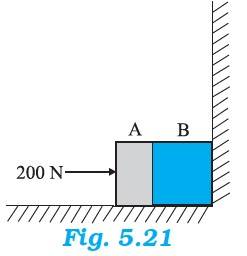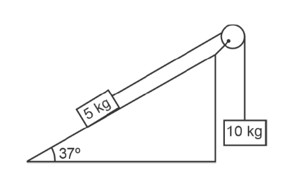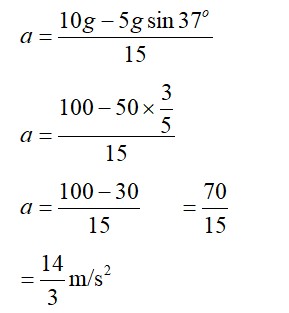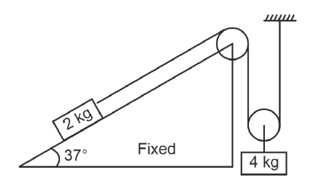5.34 Two bodies A and B of masses 5 kg and 10 kg in contact with each other rest on a table against a rigid wall (Fig. 5.21). The coefficient of friction between the bodies and the table is
0.15. A force of 200 N is applied horizontally to A. What are
(a) The reaction of the partition
(b) The action-reaction forces between A and B ? What happens when the wall is removed?
Does the answer to (b) change, when the bodies are in motion?
Ignore the difference between μs and μk

5.34 Two bodies A and B of masses 5 kg and 10 kg in contact with each other rest on a table against a rigid wall (Fig. 5.21). The coefficient of friction between the bodies and the table is
0.15. A force of 200 N is applied horizontally to A. What are
(a) The reaction of the partition
(b) The action-reaction forces between A and B ? What happens when the wall is removed?
Does the answer to (b) change, when the bodies are in motion?
Ignore the difference between μs and μk

-
1 Answer
-
Mass of the body A, = 5 kg
Mass of the body B, = 10 kg
Applied force = 200 N
Coefficient of friction between the bodies and the table, μs = 0.15
(a) The frictional force is given by the relation
fs = ( + )g = 0.15 22.5 N. towards left
Hence, the force on the partition = 200 – 22.5 N = 177.5 N, acting rightwards
According to Newton’s 3rd law, the reaction of the partition will be 177.5 N, acting towards left
(b) Force of friction on mass A is given by
Fa = mAg = 0.15 7.5 N, acting leftward
The net force exerted by mass A on mass B = 2
...more
Similar Questions for you
= 0.92 * 1260 = 1161 m/s
For 2 kg block
T – 2g sin37 = 2a . (i)
For 4 kg block
4g – 2T =
2g – T = a . (ii)
T = (2g – a)
2g – a – 2g × = 2a
3a = 2g ×
Taking an Exam? Selecting a College?
Get authentic answers from experts, students and alumni that you won't find anywhere else
Sign Up on ShikshaOn Shiksha, get access to
- 65k Colleges
- 1.2k Exams
- 679k Reviews
- 1800k Answers






